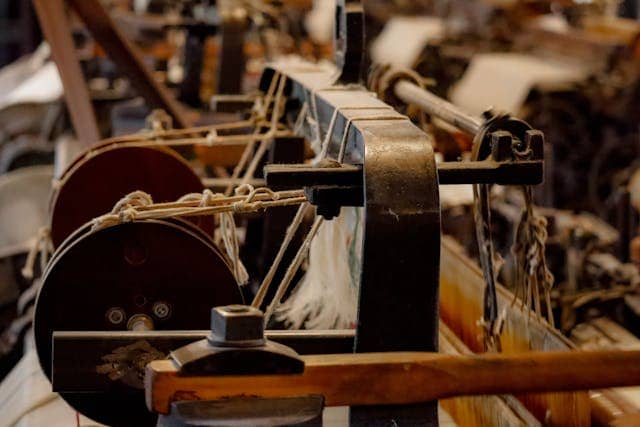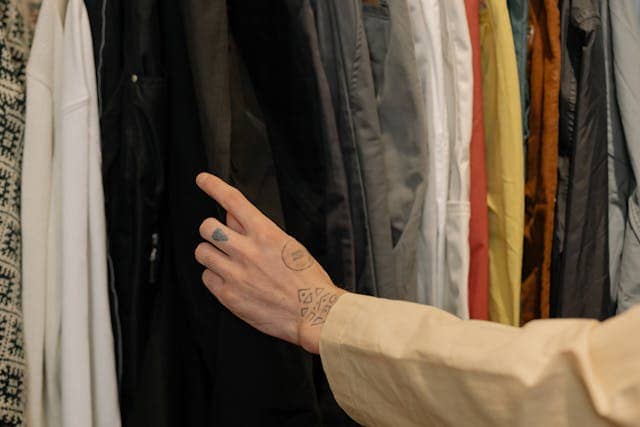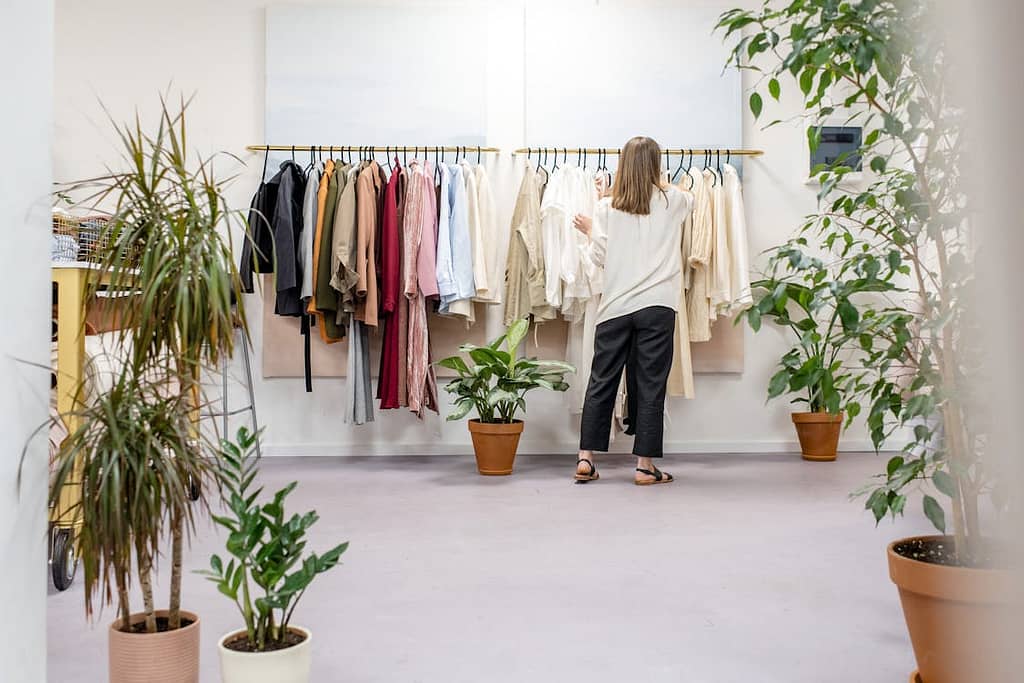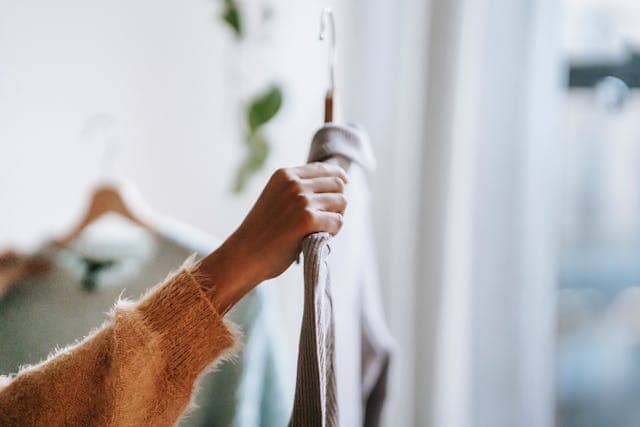Home » Jacquard Fabric
Journey: Discovering the
Intricacy of Jacquard Fabric
When it comes to fabrics, there are countless varieties to choose from. But one fabric that stands out for its intricate woven patterns and unique texture is Jacquard fabric. Join me, on a journey to discover the beauty and complexity of Jacquard fabric.

Unravelling the History of Jacquard Fabric
The genesis of Jacquard fabric is intrinsically linked to a groundbreaking advancement in textile manufacturing, brought about by Joseph Marie Jacquard in the early 1800s. A native of Lyon, France, a city renowned for its silk weaving, Jacquard, against the backdrop of the Industrial Revolution, introduced an innovative loom that transformed the fabric industry. This invention, known as the Jacquard loom, integrated the use of punched cards, a concept that laid the groundwork for computer programming centuries later. These cards enabled the automatic control of the warp threads in weaving, allowing for the creation of complex and detailed patterns with unparalleled precision.
Prior to this invention, intricate designs demanded laborious, manual manipulation of threads, limiting both the complexity of designs and the efficiency of production. Jacquard’s loom mechanised this process, significantly reducing the time and labour required to produce detailed fabrics. It democratised luxury, making what was once accessible only to the affluent, available to a broader audience. The Jacquard loom’s influence extended beyond textiles, impacting the development of other industries and technologies.
The fabric that bears Jacquard’s name became emblematic of this revolutionary change, signifying not only luxury and sophistication but also innovation and the fusion of art and technology in textile production. The evolution of Jacquard fabric through the centuries remains a testament to the enduring legacy of its eponymous inventor, whose contribution extended far beyond the looms of Lyon, influencing both the textile industry and the technological advancements that followed.
The Mechanics Behind the Magic
The Jacquard loom, pivotal in the creation of Jacquard fabric, stands as a marvel of textile engineering. This innovative apparatus allows for the control of each warp thread independently, a feature that sets it apart from conventional weaving techniques. Using punched cards, similar to those that would later influence computer programming, the loom facilitates the production of fabrics with elaborate designs woven directly into them. This method contrasts starkly with traditional weaving, where designs are either embroidered on the fabric after it has been woven or created through the laborious manual adjustment of threads.
The punch card system of the Jacquard loom can be seen as an early form of binary code, where holes in the cards dictate the lifting or not lifting of warp threads during the weaving process. As the cards pass through the loom, they control which threads are raised at any given time, thus enabling the weaver to create detailed patterns and textures that were previously unattainable on such a large scale. The precision and complexity achievable through this method are unparalleled, allowing for the creation of fabrics with depth, texture, and patterns that can range from the simplest of motifs to the most elaborate and intricate designs imaginable.
This mechanised process not only elevated the potential for creative expression in textiles but also significantly increased efficiency and productivity. The Jacquard loom’s ability to automate the weaving of complex patterns revolutionised the textile industry, marking a significant leap forward in the manufacture of patterned fabrics. The intricacies of this technique showcase the blend of artistry and technical ingenuity that is characteristic of Jacquard fabric, offering a glimpse into the sophisticated world of textile production.

Identifying Quality Jacquard Fabric
Discerning the quality of Jacquard fabric requires a keen eye for detail. A hallmark of excellence in Jacquard is the precision with which patterns are woven into the fabric. This intricacy is evident in the clarity and definition of the design, where each motif should be distinct and sharply rendered, without any blurring or smudging at the edges. Quality Jacquard will exhibit a consistency in texture across the entire piece, indicating that each thread has been meticulously controlled during the weaving process.
The density of the weave is another indicator of quality. Superior Jacquard fabrics are characteristically dense, contributing not only to the durability of the material but also to its luxurious feel. This density ensures that the fabric can withstand regular use while maintaining its distinctive patterns and texture.
In addition to the visual and tactile cues, the fabric’s weight is a reliable indicator of its quality. A heavier Jacquard typically suggests a higher thread count and a more substantial weave, qualities that are often synonymous with durability and luxury. It’s also beneficial to examine the fabric under natural light, as this can reveal the vibrancy of the colours and the depth of the pattern, further signs of a well-crafted Jacquard.
Lastly, while imperfections are inherent to any textile product, excessive loose threads or noticeable inconsistencies in the weave may indicate substandard production techniques. When selecting Jacquard fabric, it’s advisable to opt for those that demonstrate uniformity in their construction, ensuring both aesthetic appeal and long-lasting wear
Versatile Uses of Jacquard Fabric
The remarkable versatility of Jacquard fabric is evidenced by its widespread application across an array of products and settings. This fabric’s rich texture and elaborate patterns lend an air of luxury and sophistication to any item it graces. In the realm of fashion, Jacquard is a favoured choice for designer garments, including evening wear, intricate jackets, and bespoke accessories such as handbags and scarves, showcasing its adaptability to both bold statements and understated elegance.

Beyond its prominence in apparel, Jacquard’s durability and aesthetic appeal make it a popular choice for interior decorating. It is often selected for upholstery projects, drapery, and accent pillows, providing a textured depth that can transform the ambiance of living spaces. The fabric’s intricate designs bring a unique character to furniture pieces, making them stand out as focal points in a room’s decor. Additionally, Jacquard can be found enhancing the luxury of bedding collections, from duvet covers to decorative throws, adding a layer of sophistication and comfort.
The versatility of Jacquard extends to its utility in creating visually stunning table linens and window treatments, further testament to its ability to enrich the aesthetic of any environment. Whether it is elevating the elegance of a dining setting with exquisitely patterned tablecloths and napkins or adding a refined touch to windows with beautifully designed curtains, Jacquard fabric demonstrates its capacity to infuse beauty into everyday items.
Its widespread use across various domains underscores Jacquard’s unmatched versatility, affirming its status as a staple in both fashion and interior design. The fabric’s enduring appeal lies in its ability to marry functionality with aesthetic finesse, making it a perennial favourite for a broad spectrum of applications.
Caring for Your Jacquard Fabric
Maintaining the elegance of Jacquard fabric requires attentive care to preserve its intricate patterns and luxurious texture. It is imperative to adhere to the specific care instructions provided, as these can vary depending on the fabric blend. Generally, Jacquard fabrics benefit from being laundered on a delicate cycle with a mild detergent to prevent any harsh damage to the fibres. It is recommended to wash the fabric inside out, if possible, to protect the detailed surface from wear and abrasion during the wash cycle.
Should the Jacquard fabric be susceptible to fading or if it’s a richly coloured textile, washing it in cold water is advisable to minimise colour leaching. When it comes to drying, air drying is preferred to maintain the fabric’s integrity, though a tumble dryer set to a low heat can be used for fabrics that tolerate it well. Ironing should be done on the reverse side to safeguard the raised patterns from being flattened, using a cool iron setting without steam to gently remove any wrinkles.
For Jacquard items that are dry clean only, ensuring they are handled by a reputable cleaner familiar with luxury fabrics is crucial. This care and attention to detail will ensure that Jacquard fabrics retain their beauty and durability, allowing them to remain a cherished part of your wardrobe or home décor for years to come.

The Future of Jacquard Fabric
As we stride further into the digital age, Jacquard fabric’s trajectory appears increasingly innovative and promising. Emerging technologies in textile manufacturing are poised to enhance the precision and variety of patterns we can expect from Jacquard, making it even more versatile and appealing across various sectors. The fusion of traditional weaving techniques with cutting-edge digital tools heralds a new era for Jacquard, enabling designers to experiment with complex patterns and textures that were once deemed impossible.
The commitment to sustainability presents another exciting avenue for the evolution of Jacquard fabric. The industry is gradually shifting towards environmentally friendly practices, incorporating recycled materials and sustainable fibres into Jacquard weaving. This shift not only addresses ecological concerns but also opens new design possibilities, marrying the aesthetic allure of Jacquard with the principles of ethical fashion and decor.
Anticipating these developments, it’s clear that Jacquard fabric will continue to be a staple for those who value both heritage and innovation in textile design. Its adaptability and enduring elegance ensure that Jacquard will grace our lives in manifold forms, blending seamlessly with the trends of tomorrow.